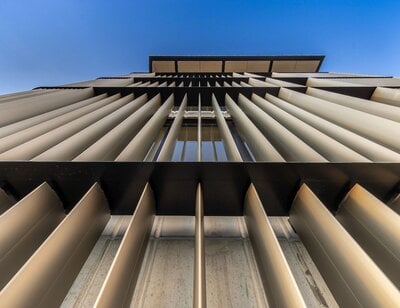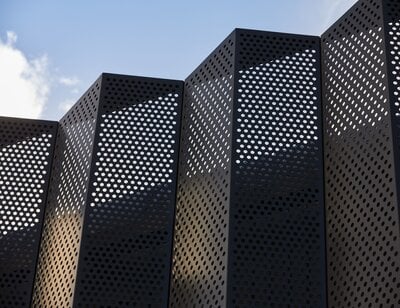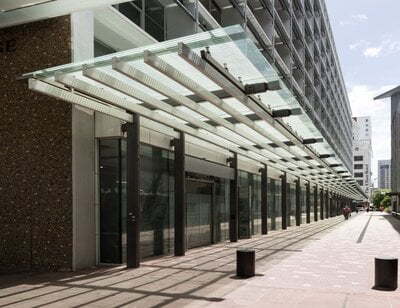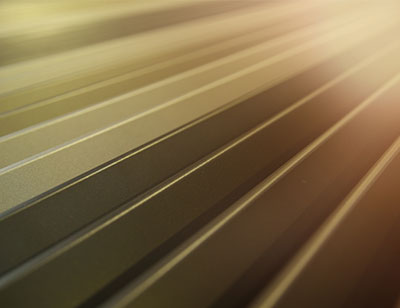.jpg?width=2000&name=132A7075%20(1).jpg)
A façade is the face and the dress of a building, a statement of its and the architect’s identity. However, that’s just part of the story.
A façade is also a system of technical qualities whose purpose is to improve the performance of a building and the wellness of its occupants.
Such features may not be immediately visible but are as important as looks. In this blog, we'll look at the five most important reasons to make sure they are part of a façade design.
Lower energy bills and higher comfort
Passive cooling. Air and sun rays are the two elements the building will be exposed to the most, regardless of where it’s located. When a façade system is able to filter them efficiently (by keeping the heat out and letting fresh air in), the interior of a building can be cooled during the summer with less use of air conditioning.
Heat insulation. During the cold season, a technically efficient façade will also do the opposite, by keeping the heat in and letting the cold out to save on heating costs. Clay façade tiles, for example, can be great insulators, thanks to their heat buffering properties.
Acoustic insulation. Façades are often exposed to noise pollution coming from busy streets. Even when noise levels won’t become a health hazard, they will at the very least lower the productivity of the building’s occupants.
Increased lifespan
Protection from the elements. Thermal insulation is not the only important technical aspect of a façade system. Depending on its location and orientation, a façade may be particularly exposed to heavy wind loads and rainfalls. When buildings are located on seafronts, they will also face additional threats from salt corrosion. A façade with the right structure and materials will be an effective shield against the physical impact of these elements.
Less need for maintenance. When a façade has all the technical features we described above (thermally insulated, protected from direct sunlight, strong winds and rainfalls), it will be less subject to temperature fluctuations, condensation and other factors that would accelerate its degradation. The positive impact of that will be felt over the years, as the façade (and the rest of the building) will require less maintenance.
Conclusion
Of course, there are valid reasons to go beyond aesthetics and design high-performing façades: they will help save costs on energy and maintenance and improve the level of comfort and productivity of its occupants. Architects can rely on new materials and new building techniques to make façades not only unique-looking but also technically efficient.
If you want to create a façade with an experienced, innovative company, get unique facade design inspiration for your next building project with our Facade Impressions Guide. You can download it here.









